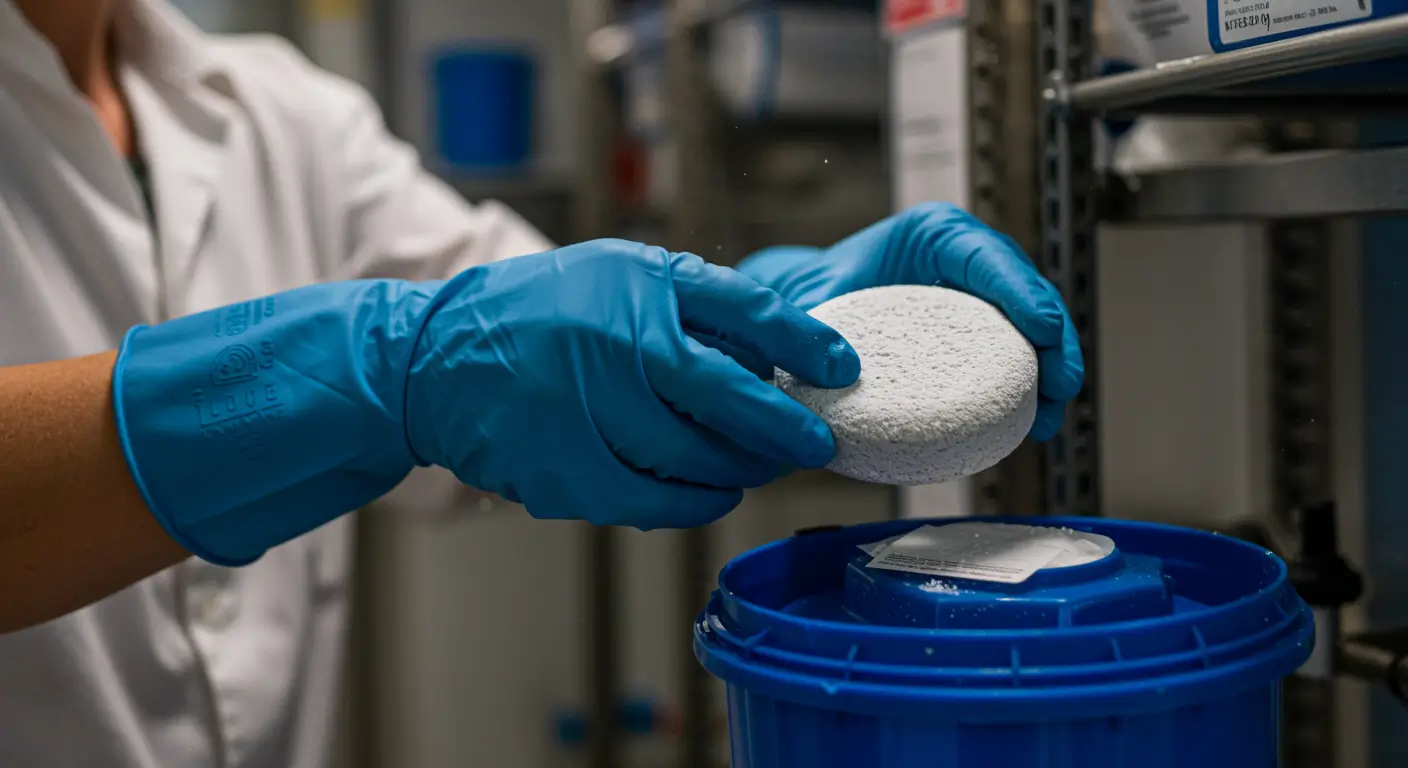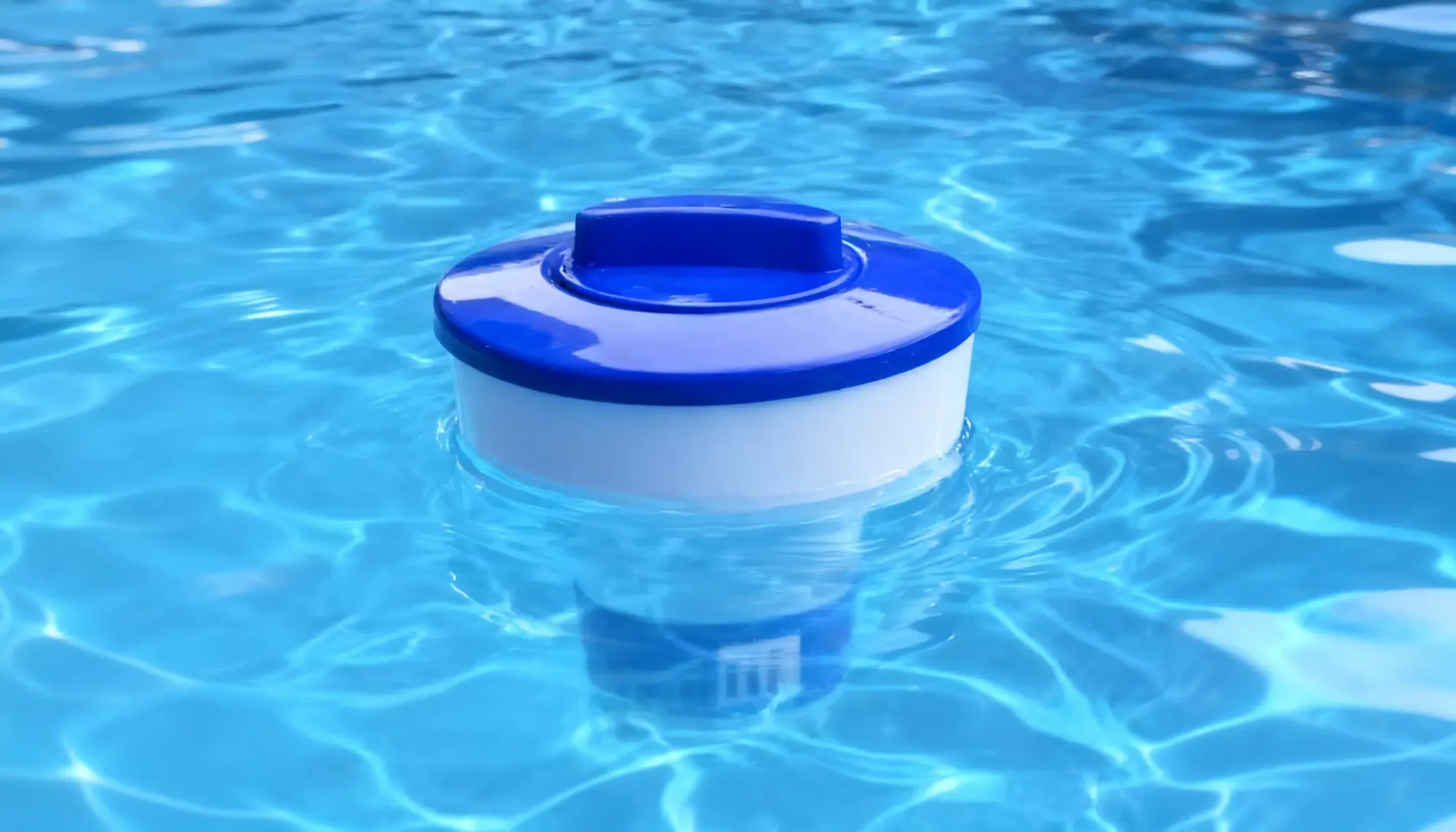How to Use Chlorine Tablets in Your Pool?

Anyone who’s looked after a pool knows it’s not always smooth sailing. One week, your pool is bright and clear. Next, it looks cloudy or green. That’s when chlorine tablets come to the rescue. They keep things clean without needing you to play chemist every day. Nonetheless, proper use of them makes a huge difference.
The guide correctly leads you through the whole process: selection, application, and dosage, all determined by what is really effective in Australian backyards as well as what is recommended by our local health standards.
What Are Pool Chlorine Tablets & Why Use Them?
If you’ve ever fought off cloudy water or that stubborn green tinge, you’ve probably already met pool chlorine tablets. They’re one of those little pool essentials most owners can’t do without, easy to use, steady in performance, and great at keeping things crystal clear. But not all tablets are made the same, and that’s where a bit of know-how makes all the difference.
The Chemistry Behind the Tablet: Trichlor vs. Dichlor
Most common pool tablets are Trichlor (Trichloro-S-Triazinetrione), typically sold as 3-inch pucks containing about 90% active chlorine. The key ingredient that makes them so effective for outdoor pools is a built-in stabiliser called Cyanuric Acid (CYA). Think of CYA as sunscreen for your chlorine; it protects the chlorine from being rapidly destroyed by the sun's UV rays, making it last much longer.
You may also encounter Dichlor (Sodium Dichloro-S-Triazinetrione), which is more common in granular shock treatments or smaller 1-inch tablets. It dissolves faster and also contains CYA, making it useful for a quick chlorine boost in small pools or spas. However, for steady, week-to-week maintenance in most residential pools, Trichlor is the go-to choice.
Choosing the Right Size: 3-Inch vs. 1-Inch Tablets
|
Feature |
3-Inch Tablets |
1-Inch Tablets |
|
Best For |
Pools over 20,000 litres |
Spas & small pools (< 20,000 litres) |
|
Dissolve Rate |
Slow (lasts up to a week) |
Fast (lasts a few days) |
|
Handling |
Less frequent refilling |
More frequent refilling |
|
Cost |
More cost-effective for large pools |
It can be expensive for large pools |
Crucial Safety Precautions: Handling Chlorine Like a Pro in Australia
Chlorine is a powerful chemical and must be handled with respect. Bodies like Safe Work Australia have clear guidelines for a reason. Always prioritize safety to protect yourself and your family.
- Personal Protective Equipment (PPE): As recommended by Australian safety authorities, always handle chlorine tablets in a well-ventilated outdoor area. Wear chemical-resistant gloves and safety goggles to protect your skin and eyes from burns.
- Safe Storage: Store chlorine in its original, tightly sealed container in a cool, dry, and secure place. Keep it away from children, pets, and other chemicals—especially acids or petroleum products like fuel, as mixing can cause a dangerous fire or explosion.
- The Golden Rule: NEVER mix different types of chlorine or other pool chemicals together. Always add chemicals to water, not the other way around, to prevent violent reactions.

The Right Way to Add Chlorine Tablets to Your Pool: A Step-by-Step Guide
How you introduce tablets to your pool is critical for both effectiveness and protecting your expensive equipment. Here are the professional-approved methods.
Method 1: The Floating Dispenser (The Beginner's Choice)
If you’ve just started looking after a pool, a floating dispenser makes life easy. It drifts around the water, slowly letting chlorine out as it goes.
Here’s how to do it:
- Test your pool water first.
- Pop in the right number of tablets for your pool size.
- Adjust the vent to control how fast they dissolve.
- Drop it in and let it do its thing.
People like this method because it is easy and cheap, but chlorine can get stuck in corners.

Method 2: The Automatic Chlorine Feeder (The Set-and-Forget Solution)
An automatic feeder is a hassle-free solution. It hooks right into your pool’s plumbing and keeps the chlorine level steady — no extra work needed.
To set it up:
- Turn off the pump.
- Open the feeder and load your tablets.
- Close it tight.
- Afterwards, turn on the pump again and set the dial to the desired output.
This is the most precise and consistent way of chlorination. The initial investment is more, and you may have to hire an installer, but after that, it runs so smoothly that you hardly notice it.
Methods to AVOID (And Why They Are Dangerous)
Don’t throw tablets straight into the pool, they’ll stain or bleach the liner and damage plaster. And never stick them in the skimmer basket. That forces super-concentrated chlorine straight through your pump and heater, wearing them out fast.
How Many Chlorine Tablets Do You Need?
Calculating Your Initial Dosage
Start with one 3-inch tablet per 20,000–40,000 litres per week, but always check the water first since weather and swimmers affect chlorine levels.
Beyond Dosage: Understanding Key Pool Chemistry Levels
SPASA Australia and state health experts recommend keeping these levels in check:
- Free Chlorine (FC) should be 1–3 ppm to keep your pool clean and safe.
- CYA should stay around 30–50 ppm to protect the chlorine from the sun, but over 100 ppm and it won’t work properly.
- Keep pH between 7.2 and 7.6 so the chlorine can do its job.
- Total Alkalinity (TA) at 80–120 ppm helps keep your pH steady.
Balancing these parameters allows chlorine to do its duty and therefore the pool remains clear without making chemicals wasteful.
Your Actionable Checklist for Perfect Chlorination
- Weekly:
- ☐ Test chlorine and pH levels
- ☐ Clean skimmer and pump baskets
- ☐ Refill your floater or feeder
- Monthly:
- ☐ Check Total Alkalinity, Calcium Hardness, and CYA
- ☐ Shock the pool after heavy use or storms
- ☐ Brush walls and vacuum
Once you've mastered your pool's chemical balance with this checklist, don't forget that physical cleaning is just as crucial. While chlorine tablets handle the sanitizing, tasks like brushing the walls and vacuuming are essential for preventing algae growth. A robotic pool cleaner can automate the entire physical cleaning process, complementing your chemical maintenance routine to create a truly pristine swimming environment.
FAQS
How long does one tablet last?
Usually three to seven days, depending on the water flow, size, and heat.
When can I swim after adding them?
Once chlorine levels sit back in the safe range, between 1 and 3 ppm. A quick test before you dive in does the trick.
Should I break tablets to make them dissolve faster?
No need. Breaking them just dumps too much chlorine at once and can mark your surfaces.
Can tablets replace shock treatments?
No. Tablets keep your chlorine steady, but shocks give that deep clean when algae or bacteria start winning the fight.
Conclusion: Your Partner in a Safe and Sparkling Pool
Mastering chlorine tablets transforms pool care from a constant chore into a simple routine. By following these safe and effective methods, you ensure your water stays clear, your swimmers are safe, and your pool is always ready for a perfect day. Prepared to make pool care even easier? Discover the Aiper range of innovative robotic solutions designed to handle your cleaning needs.
References
- NSW Health - Public swimming pools and spa pools
- VIC Better Health Channel - Swimming pools - water quality
Australian Pesticides and Veterinary Medicines Authority (APVMA) - Homepage

